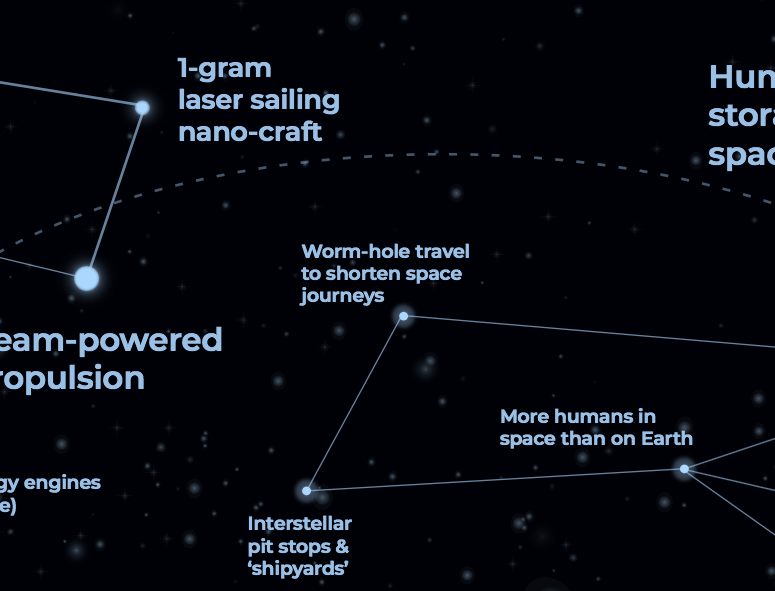Following on from my Table of 100 Disruptive Technologies, I recently received an enthusiastic email from Max Nocerino, a Sci-Fi fan and aspiring futurist from Queens, New York. His idea is a table of future tech, but one that’s very much in the Twilight Zone, to borrow a Sci-fi reference. In other words, tech that’s highly improbable, but hugely impactful were someone able to figure out how to do it. Clearly some of these ideas will be ‘impossible’ given today’s science, but remember the Earth was once thought to be flat and about 6,000 years-old, so perhaps our understanding of most things can change given enough time. His first entry is Faster Than Light Travel, an idea I myself had on a Future of Space graphic recently.
Max’s explanation below, along with some detail from the Future of Space.
“This has been something that has been depicted in sci-fi since the beginning of time. Our first Moonshot is Faster than light travel; but is it possible? Many sci-fi mediums have depicted a parallel dimension called ‘Hyperspace’ that allows a ship to move many times faster than light and reach other Star systems in mere hours instead of thousands of years. The Millennium Falcon from Star Wars can travel at a little over than the equivalent of 4 quadrillion miles per hour and can reach another galaxy in roughly 100 days. Even if we could move at the speed of light; it would still take us 4 years to reach the nearest solar system, Alpha Centurai.
So how do we achieve this since we don’t know if ‘hyperspace’ exists and even if we did; we don’t know how to access this dimension. In 1994, Mexican physicist Miguel Alcubierre envisioned what was eponymously called the Alcubierre Drive, in which a ship could create a warp bubble around a ship that would fold space in a sense and make the distance between the vast void between stars, much smaller.
Another option would be to travel in through a wormhole like in the sci fi movie Interstellar. A wormhole is a hypothetical singularity Point in space that connects two points in space time and would allow a ship to be connected to another region instantaneously. Unfortunately, wormholes (if they exist) may only exist for seconds and may not be big enough for a ship to fit into. There is also now new evidence that even if this is possible; travel through one would still be slow. My personal idea for FTL would be to heat something to absolute hot or the Planck temperature where the laws of physics no longer apply and then the ship could pass through the vacuum since the expansion of the universe; the fabric of space time DOES move FTL. A ship would need a way to generate this intense heat and then shield itself from the heat (perhaps with a deflector shield). This is all speculation but since the universe itself moved faster than light at the point of the Big Bang; it is a possible phenomenon. We just need to figure out how to initiate it naturally….”
—
BTW, for further context: “When a distinguished but elderly scientist states that something is possible, he is almost certainly right. When he states that something is impossible, he is very probably wrong.” Arthur C. Clarke.

